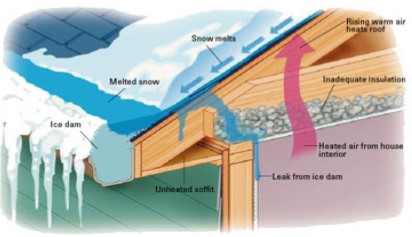Understanding Your Governing Documents

After joining a CIC, or Common Interest Community, each member receives governing documents they must follow in respect to how the community and individual units are operated and used. In most cases, governing documents include a declaration, bylaws, articles of incorporation, and rules and regulations. Those documents will describe important administration or financial info like the association’s rights and responsibilities, the homeowner’s rights and responsibilities, how the annual budget is created, and the procedure to follow when electing a board. Most importantly, the governing documents will also outline the powers granted to that elected board, which exists to help operate and preserve the association. The board will typically have the power to create or amend rules and regulations in the CIC, create procedures and parameters for fining when owners are not compliant, adopt an operating budget (which sets “dues”), hire vendors to provide services to the association, etc. Additionally, if damages or other issues occur on association property, the governing documents disclose the insurance coverage of the CIC and how the responsibility between the association and unit owner differ. In many cases, documents may define that anything outside an individual unit becomes a responsibility of the association, while maintaining and repairing damage inside the unit boundaries becomes a responsibility of the unit owner. It’s important to understand that distinction while owning the unit, which the governing documents and board will uphold. When a homeowner decides to sell their unit, the governing documents will most likely include regulations to follow during that process. In Minnesota, under the Minnesota Common Interest Ownership Act, the seller of a unit must provide the governing documents to a prospective buyer to view before purchasing. In every step of the association member’s ownership, the governing documents are necessary to read and learn in order to understand the operation of their Common Interest Community.
Signs It is Time to Update Governing Documents

Perhaps the most important tool you have as a Board member to help in your governing responsibilities and decision-making process is the association’s set of governing documents. It is the foundation for every decision you make and the playbook for how those decisions will be executed into action. Like everything else in the association, however, governing documents also need maintenance and updating. Here are a few key areas of the governing documents that might suggest it is time to either amend sections or re-state the entire document: Developer/Declarant Rights – most Declaration of Covenants (other common titles: Declarations or Covenants, Conditions and Restrictions) have language and numerous sections that instruct how the association should be run and give rights to the developer/declarant when the association is first incorporated and still under “declarant control.” Once the association turns over to the membership and starts to be controlled by a Board of Directors, those sections are irrelevant. They are worth removing to clean up the document and eliminate any confusion. Ambiguous or Missing Information – the older the document, the more confusing the language can be. Some common examples of ambiguous information can be the definition of unit boundaries, listing of common elements and limited common elements, clear description of maintenance responsibilities, and scope of insurance requirements. If you find yourself spending the money to seek legal opinions for clarification, it’s a good sign you might need to amend and re-state the document(s). Alignment with State Laws – it can be common for governing documents to contradict state laws. Under the Minnesota Common Interest Ownership Act (“MCIOA” or 515B), most sections of the statute preface by saying “unless the association’s documents say otherwise…” If the association’s document predates MCIOA, the association could be missing out on key provisions of the statute that better position the association for success. For example, MCIOA gives the Board authority to levy a special assessment. If the association’s governing documents, however, require the membership to approve a special assessment, state statute would default to the governing docs, and the Board would have to seek approval. It’s an example of a significant hamstring the Board could have on the operation of the association. In most instances, it befits the association to be a part of MCIOA and re-state the documents to both align and reference state statute. Outdated Communication & Voting Requirements – some simple but powerful components should be a part of all governing documents. The bylaws should allow for proxy voting. Options for voting by mail and electronically should be incorporated. Delivery methods for communications should extend beyond the dated “mail only” option. Voting and communication requirements in the governing documents are a telltale sign of the age of the documents, and a good signal that it is time to amend or re-state. Language Style – typically, the older the document, the more it sounds like a room full of lawyers drafted it. While modern day documents certainly use legal phrasing and key terms, they tend to be more clear and easier for a layman to understand. Amending or re-stating governing documents can be a complicated endeavor. But again, they are your most powerful tool. If your documents are dated and issues listed above interfere with your interaction with them, it is a worthy cause to update.
Year-End Requirements for Associations

Did you know that associations, as a registered non-profit corporation, are required to file Federal and State taxes? It is also important to be aware of any requirements of your governing docs for an annual financial review or audit. If you are governed under MCIOA (Minnesota Common Interest Ownership Act,which effects all condominium associations and any association incorporated after June 1, 1994),you are required to have, at minimum, an annual financial review. Note: you can have a vote of the membership to waive this requirement. Financial reviews and audits do differ; however, they achieve the same goal. That is to have an independent, licensed CPA review the association’s financials and the accounting practices of its management company. It should also be noted that MCIOA puts this criteria on who performs the financial review or audit. Your property manager and staff at Sharper are working hard behind the scenes to provide the engaged CPA firm with all of the materials required. Bank statements, reports, invoices, etc. all must be provided.
Construction Chat: Navigating a Bad Ice Dam Year

The up and down temperatures and the record-breaking February snow totals have been the perfect recipe for ice dam formation on various types of roofs this year. Ice dams are particularly tricky for associations because the line between Homeowner vs. Association responsibility can become rather blurred. First, it is important to understand how and why ice dams form. In short, they form when snow melts on your roof and then re-freezes over the eave-typically over the soffit area. The ice “dam” then prohibits further melting snow to drain properly off the roof, which can (but not always) cause leaking water into the home. There are many factors as to why ice dams form-the inevitable freeze/thaw cycle; excess snow pack; clogged gutters or frozen downspouts-but the primary culprit is excessive heat loss from the unit and/or a lack of ventilation. Which is why, many times and depending on your governing documents, ice dams and the leakage they can cause are not necessarily the association’s responsibility. They are not caused by roofing deficiencies; they are caused by insulation and ventilation deficiencies INSIDE of the home. It is important to understand how your association’s governing documents define “unit boundaries.” Does the boundary of the unit include “unfinished surfaces” or “no upper or lower boundaries”? If so, this could imply that the attic space (or the space between the roof deck and the ceiling) and insulation inside of it would be a homeowner responsibility; therefore, the heat loss causing the ice dam is the homeowner’s deal. Once there is an understanding of who is responsible for what, it is very helpful for associations to review their ice dam situation and have a policy in place for how they are to be addressed.
